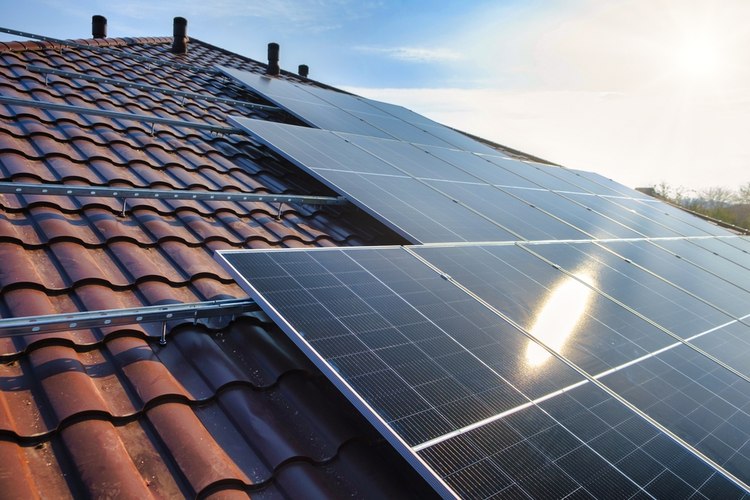Understanding Home Solar Savings and Costs
Residential solar system installation is gaining momentum as an appealing investment due to decreasing costs and numerous financial and environmental benefits. Government incentives make solar energy more accessible, enhancing its role in reducing electricity costs and carbon emissions. Grasping the nuances of installation expenses, financing options, and long-term returns can lead to substantial savings and sustainability.

Understanding Home Solar System Costs and Benefits
The initial cost of a home solar system typically ranges from $15,000 to $25,000 before incentives, depending on system size and quality. This investment includes solar panels, inverters, mounting equipment, and installation labor. Most residential systems fall between 5kW and 10kW in capacity, with costs averaging $2.50 to $3.50 per watt installed. However, these upfront expenses are offset by several benefits, including reduced or eliminated electric bills, protection against rising utility rates, and increased property values. Studies indicate that homes with solar systems sell for approximately 4% more than comparable non-solar homes. Additionally, the federal solar investment tax credit (ITC) currently allows homeowners to deduct 30% of installation costs from their federal taxes.
The Financial Reward of Investing in Solar Panels
The payback period for solar panel investments typically ranges from 7 to 12 years, depending on your location, electricity rates, and available incentives. After this breakeven point, the electricity generated represents pure savings. In states with high electricity costs like California or Hawaii, payback periods can be significantly shorter. Another financial advantage comes from net metering programs available in many states, which allow homeowners to sell excess electricity back to the grid. This further improves the economics of solar ownership by effectively using the utility company as a free battery storage system. Over a 25-year period (the typical warranty lifetime of solar panels), homeowners can save between $20,000 and $50,000 on electricity costs.
Environmental and Long-Term Benefits of Solar Energy
Beyond financial considerations, solar power delivers substantial environmental benefits. The average residential solar system can eliminate 3-4 tons of carbon emissions annually, equivalent to planting about 100 trees each year. Solar panels typically maintain over 80% of their production efficiency after 25 years, continuing to generate clean electricity long after the system has paid for itself. This long operational lifespan increases the overall environmental return on investment. Additionally, solar installations reduce demand on the electrical grid during peak hours, helping to prevent brownouts and blackouts during extreme weather events. As climate concerns grow, the non-financial benefits of solar energy become increasingly valuable to homeowners looking to reduce their environmental footprint.
Key Factors Affecting Solar Installation Costs
Several variables significantly impact the cost of installing a solar system. Roof condition and orientation play crucial roles, as south-facing roofs with a 15-40 degree tilt capture maximum sunlight in North America. Homes with aging roofs may require replacement before installation, adding $5,000-$10,000 to the project cost. System size represents another major factor—while larger systems cost more upfront, they typically offer better economics per watt. Local regulations and permitting requirements vary widely, potentially adding $500-$1,000 in fees and several weeks to the installation timeline. Labor costs fluctuate by region, with installations in high-cost-of-living areas commanding premium rates. Finally, equipment quality affects both price and performance, with premium panels offering better efficiency and longer warranties at higher initial costs.
Financing Options for Solar Panel Installation
Homeowners have multiple pathways to finance solar installations. Cash purchases provide the highest long-term return by avoiding interest or fees, but require significant upfront capital. Solar loans, typically offered with 5-20 year terms and interest rates between 3-7%, allow homeowners to own their systems while spreading payments over time. Solar leases and Power Purchase Agreements (PPAs) require little or no money down but involve paying a third party for electricity produced or leasing the equipment for 20-25 years. While these options eliminate maintenance responsibilities, they offer lower long-term savings compared to ownership. Many states and utilities also provide additional incentives, including performance-based incentives, rebates, and property tax exemptions that can substantially reduce costs.
Comparing Solar Installation Providers and Costs
When selecting a solar provider, considering both cost and quality factors is essential. The table below compares some national solar installers based on typical pricing and service offerings:
| Provider | Average Cost Per Watt | Warranty Length | Special Features |
|---|---|---|---|
| SunPower | $3.25 - $4.00 | 25 years (comprehensive) | Highest efficiency panels, integrated system |
| Tesla Solar | $2.00 - $2.50 | 25 years (panel), 10 years (inverter) | Sleek design, optional Powerwall battery |
| Sunrun | $2.50 - $3.20 | 25 years (panel), 10 years (workmanship) | Multiple financing options, leases available |
| Vivint Solar | $2.70 - $3.30 | 25 years (panel), 10 years (workmanship) | In-house installation teams, monitoring app |
| Local Installers | $2.40 - $3.50 | Varies by company | Personalized service, community reputation |
Prices, rates, or cost estimates mentioned in this article are based on the latest available information but may change over time. Independent research is advised before making financial decisions.
Conclusion
Understanding the costs and savings associated with home solar systems involves weighing upfront expenses against long-term financial and environmental benefits. While the initial investment ranges from $15,000 to $25,000 before incentives, substantial tax credits, utility savings, and increased home value make solar an increasingly attractive option for many homeowners. By carefully considering system size, installation factors, available incentives, and financing options, homeowners can make informed decisions that align with their financial goals and environmental values. As technology improves and costs continue to decline, solar energy remains a promising investment for those looking to reduce both their carbon footprint and long-term energy expenses.




